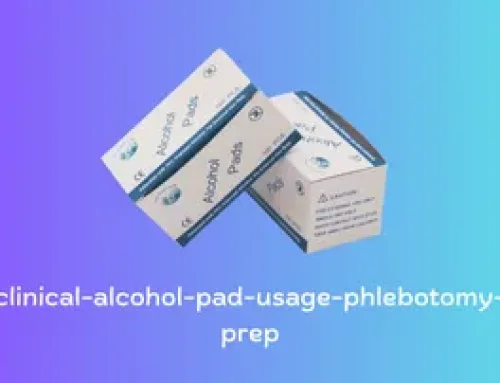Pregnancy tests are an essential tool for women who are trying to conceive or those who suspect they may be pregnant. If you suspect you may be pregnant, one of the easiest and most convenient ways to confirm your suspicions is by using a home pregnancy test. The HCG Pregnancy Test Midstream is one such test that is commonly used by women to determine whether or not they are pregnant. In this article, we will discuss what is the HCG Midstream Pregnancy Test and how does it work?
What is an HCG Pregnancy Test Midstream?
The HCG Pregnancy Test Midstream is designed to be used by women in the comfort of their own homes. It is a small, plastic device with a test strip that is inserted into the urine stream. The test strip contains antibodies that bind to HCG if it is present in the urine. If HCG is detected, the test will show a positive result, indicating that the woman is pregnant.
How Does the HCG Pregnancy Test Midstream Work?
The HCG Pregnancy Test Midstream works by detecting the presence of HCG in a woman’s urine. The test comes in a plastic casing that contains a testing strip with a small window on one end and an absorbent tip on the other. The absorbent tip is placed in the stream of urine for a few seconds, and then the testing strip is placed in the plastic casing with the window facing up.
As the urine travels up the testing strip, it comes into contact with special antibodies that are designed to react with HCG. If HCG is present in the urine, it binds to the antibodies, causing a reaction that produces a visible line or plus sign on the testing strip. The appearance of this line or plus sign indicates that HCG has been detected, and the woman is likely pregnant.
The HCG Pregnancy Test Midstream works by detecting the presence of HCG in a woman’s urine. The test strip contains monoclonal antibodies that bind specifically to the beta subunit of HCG. When the test strip is exposed to urine that contains HCG, the antibodies bind to the HCG molecules, forming a complex.
This complex then moves along the test strip, where it encounters a second set of antibodies that are immobilized in a specific area. These antibodies also bind to the beta subunit of HCG, but at a different location than the first set of antibodies. This results in the formation of a sandwich complex, with HCG molecules trapped between the two sets of antibodies.
The sandwich complex then interacts with a dye-labeled antibody that binds to the HCG molecules. This results in the formation of a visible line on the test strip, indicating that the test is positive for pregnancy. If no HCG is present in the urine, the test will show a negative result, indicating that the woman is not pregnant.
How to Use the HCG Pregnancy Test Midstream?
To use the HCG Pregnancy Test Midstream, follow these simple steps:
- Remove the test from its packaging and take off the cap.
- Hold the absorbent tip in the stream of urine for a few seconds.
- Replace the cap and place the test on a flat surface with the window facing up.
- Wait for the results to appear. Results typically appear within 3 to 5 minutes.
It’s important to follow the instructions carefully to ensure the most accurate results. Drinking too much fluids before taking the test, for example, can dilute the urine and affect the accuracy of the results.
How Accurate is the HCG Pregnancy Test Midstream?
The accuracy of the HCG Pregnancy Test Midstream depends on several factors, including how well the test is used and how soon after suspected conception it is taken. If used correctly and taken at the appropriate time, the test can be highly accurate, with a sensitivity of up to 25 mIU/ml of HCG.
Tips for Using the HCG Pregnancy Test Midstream
To ensure the most accurate results when using the HCG Pregnancy Test Midstream, it is important to follow the instructions carefully. Here are some tips for using the test:
- Use the first urine of the day, as this contains the highest concentration of HCG.
- Do not drink a lot of fluids before taking the test, as this can dilute the urine and reduce the concentration of HCG.
- Follow the instructions carefully, including the timing of the test and the interpretation of the results.
- Check the expiration date on the test before using it, as expired tests may not provide accurate results.
Advantages and Disadvantages of the HCG Pregnancy Test Midstream
There are several advantages to using the HCG Pregnancy Test Midstream, including its convenience, ease of use, and low cost. The test can be purchased at most drug stores and can be taken in the privacy of one’s own home.
However, there are also some disadvantages to consider. One of the biggest disadvantages is the fact that the test is not 100% accurate. Factors such as medication, medical conditions, and improper use of the test can all affect the accuracy of the results. Additionally, the test may not be sensitive enough to detect pregnancy in its earliest stages, leading to a false negative result.
Common Misconceptions about the HCG Pregnancy Test Midstream
There are some common misconceptions about the HCG Pregnancy Test Midstream that are important to address. One of the most common is the belief that the test is 100% accurate. While the test is highly accurate, there is still a small chance of a false positive or false negative result. Factors such as medication, medical conditions, and improper use of the test can all affect the accuracy of the results.
Another misconception is that the test can be used immediately after sexual intercourse to detect pregnancy. This is not true, as it takes several days for the fertilized egg to implant in the uterus and for HCG levels to rise enough to be detected by the test. It is recommended to wait at least 7 to 10 days after suspected conception before taking the test.
Conclusion
The HCG Pregnancy Test Midstream is a convenient and affordable way for women to confirm whether or not they are pregnant. By detecting the presence of HCG in a woman’s urine, the test can provide highly accurate results if used correctly and at the appropriate time. While there are some disadvantages and misconceptions to consider, the test remains a popular and reliable option for women who want to know if they are expecting.
FAQs
1. How soon after a missed period can the HCG Pregnancy Test Midstream detect pregnancy?
The test can typically detect pregnancy one week after a missed period.
2. Can the test be used if a woman is taking fertility medication?
It depends on the type of medication. Some fertility medications contain HCG, which can affect the accuracy of the test.
3. Is it possible to get a false positive result with the HCG Pregnancy Test Midstream?
Yes, although rare, it is possible to get a false positive result due to factors such as medication, medical conditions, and improper use of the test.
4. How long do the results of the test take to appear?
Results typically appear within 3 to 5 minutes.
5. How many days after ovulation can the HCG Pregnancy Test Midstream detect pregnancy?
The test can typically detect pregnancy about 10 days after ovulation.
6. How soon after conception can I use the HCG Pregnancy Test Midstream?
HCG levels typically rise enough to be detected by the test 7 to 10 days after conception.
7. Can medications or medical conditions affect the accuracy of the test?
Yes, certain medications and medical conditions can affect the accuracy of the test.
8. Can I drink fluids before taking the test?
It is best to avoid drinking too much fluids before taking the test, as this can dilute the urine and affect the accuracy of the results.
9. How accurate is the HCG Pregnancy Test Midstream?
The test is highly accurate, with a sensitivity of up to 25 mIU/ml of HCG.
10. Can the test be used as a reliable form of birth control?
No, the HCG Pregnancy Test Midstream is not a reliable form of birth control and should not be used as such.







